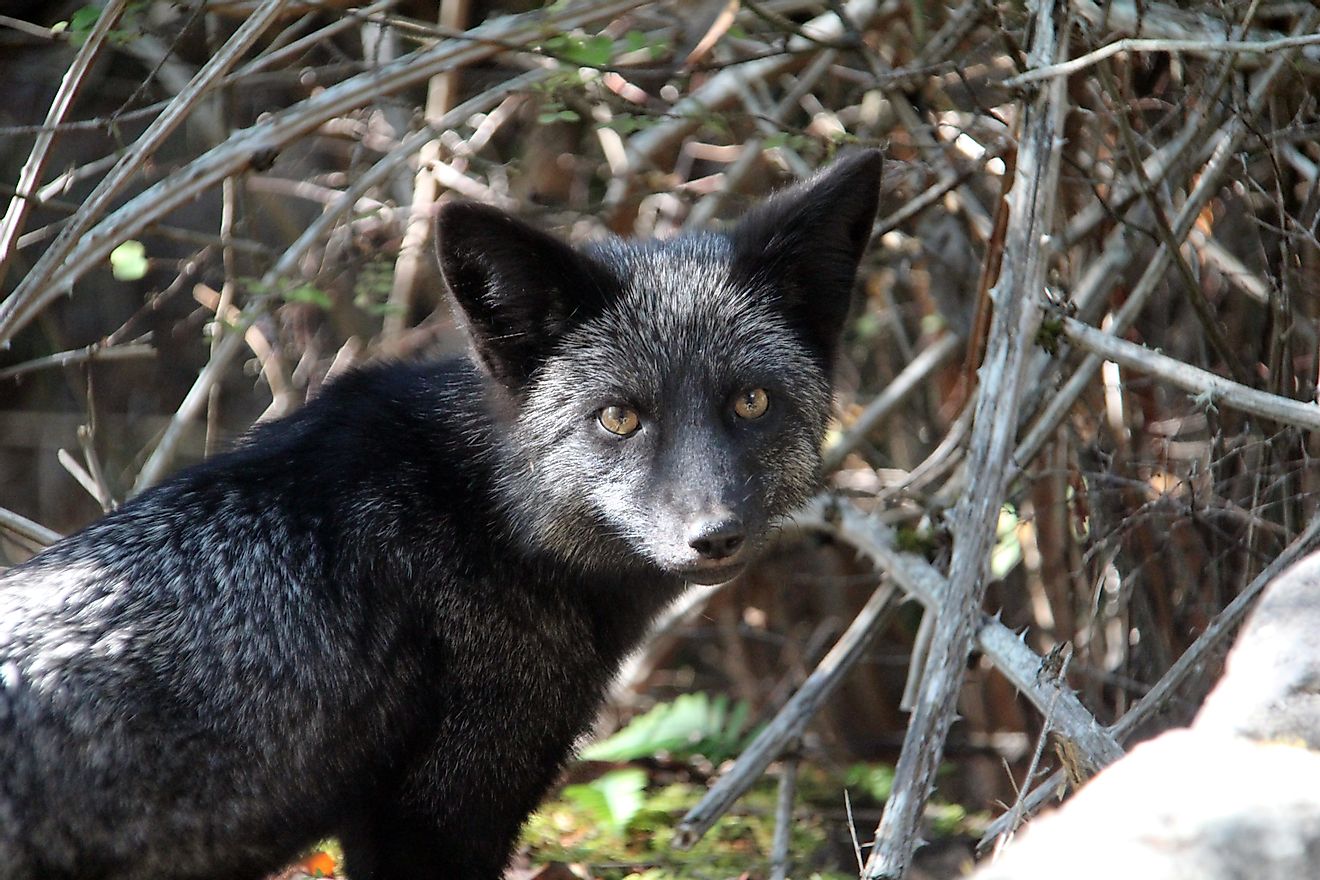Silver Fox Facts: Animals of North America

5. Physical Description
Though it is a fact not many people are aware of, the silver fox is actually the exact same species as the red fox, Vulpes vulpes. It gets its name from its fur coloration, which ranges from a bold silver to almost completely black. Like red foxes, silver foxes’ eyes also take on a golden yellow color as they mature. The weight and length of these foxes can range greatly depending upon their respective geographic locations. On average, as adults they weigh 11 to 15 pounds (5 to 7 kilograms), their length from head to tail can reach up to 40 inches (1 meter) long. The silver fox is part of the Canidae Family, making it a close relative of dogs and wolves.
4. Diet
Although it is under the Order Carnivora, this can be misleading in terms of their dietary habits. In fact, foxes are omnivores, meaning they will eat both meat (including fresh kills and carrion) and plant foods. Their diet mainly consists of rodents, rabbits, insects, birds, berries, and other plants, depending on location. When they have an abundance of food, they will store their food in caches and save them for harder times. Foxes' proclivities for stocking up food and the flexibility of their diets are part of the reason why foxes have been so successful across different parts of the world. Foxes can run into trouble with humans when they cross paths, as foxes have no trouble working their way through fences to get at livestock. In urban settings, they can be seen rummaging through garbage bins, or even eating pet food that has been left outside.
3. Habitat and Range
The silver fox, along with the red fox, are members of the most widely dispersed species from the Order Carnivora in the world. Their diaspora spans across North America, Europe, Asia, and even Australia. Foxes have proven themselves to be very versatile, have found ways to survive in all types of environments, and are even considered a pest in some parts of the world. Part of their territory expansion has been due to human introductions, so that they could partake in fox hunts in new areas. Another reason is due to the extermination of their predatory competitors. Although they are considered a species of "Least Concern" by the IUCN Red List, they do suffer from losses of habitat and exploitation through fur farming and the fur trade. The latter is especially for silver foxes, whose pelts are highly prized for their unique coloration.
2. Behavior
Silver foxes are mostly solitary animals, and are semi-territorial. Within their claimed territories lie their dens and food caches. Unlike their other canine relatives, foxes cannot produce barks and howls like dogs and wolves do. Instead, they can produce a wide range of unique sounds including a high pitched warning bark, “screams”, and snuffles, though their most distinct noise is a called a “gekker”, and it sounds like a chuckle. Foxes gekker when they are excited or nervous, so they may gekker during play or when they are defending their territory against intruders. During the winter, foxes are known to use their tails as blankets to keep themselves warm.
1. Reproduction
Due to their wide geographical range, the silver fox’s mating season varies greatly. Vixens may mate with multiple males, but in the end she will form a monogamous pair with only one ultimate choice. They will only breed once a year, and their gestation period lasts a little under 2 months. The number of pups can range greatly, but the average is 5 kits per litter. The kits do not open their eyes until 2 weeks after their births, and will take up to 5 weeks to leave their dens. The family unit will stay together until autumn, and when the kits reach maturity at 10 months they will leave to find territory of their own.











